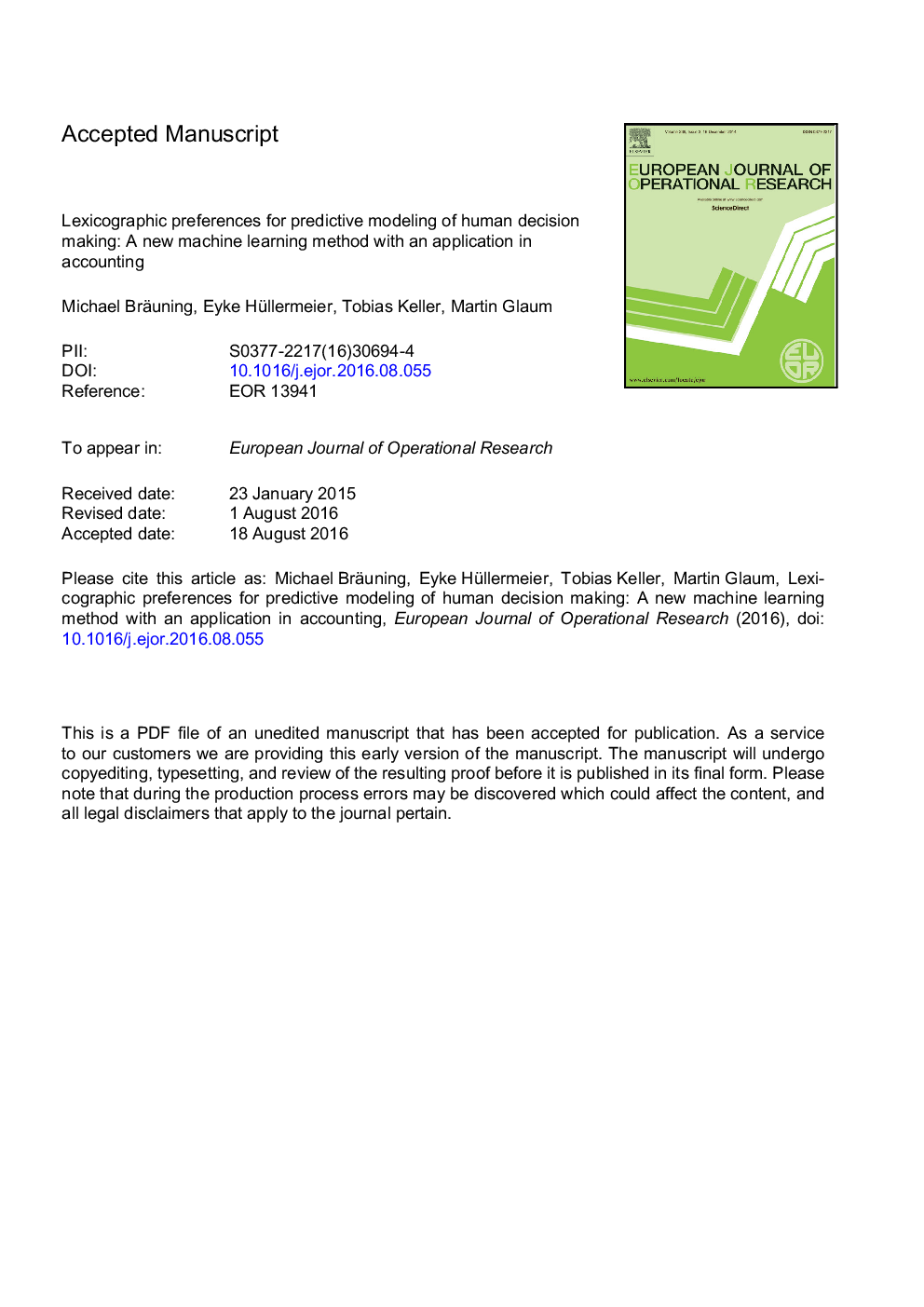| Article ID | Journal | Published Year | Pages | File Type |
|---|---|---|---|---|
| 4959969 | European Journal of Operational Research | 2017 | 36 Pages |
Abstract
Lexicographic preferences on a set of attributes provide a cognitively plausible structure for modeling the behavior of human decision makers. Therefore, the induction of corresponding models from revealed preferences or observed decisions constitutes an interesting problem from a machine learning point of view. In this paper, we introduce a learning algorithm for inducing generalized lexicographic preference models from a given set of training data, which consists of pairwise comparisons between objects. Our approach generalizes simple lexicographic orders in the sense of allowing the model to consider several attributes simultaneously (instead of looking at them one by one), thereby significantly increasing the expressiveness of the model class. In order to evaluate our method, we present a case study of a highly complex real-world problem, namely the choice of the recognition method for actuarial gains and losses from occupational pension schemes. Using a unique sample of European companies, this problem is well suited for demonstrating the effectiveness of our lexicographic ranker. Furthermore, we conduct a series of experiments on benchmark data from the machine learning domain.
Related Topics
Physical Sciences and Engineering
Computer Science
Computer Science (General)
Authors
Michael Bräuning, Eyke Hüllermeier, Tobias Keller, Martin Glaum,
